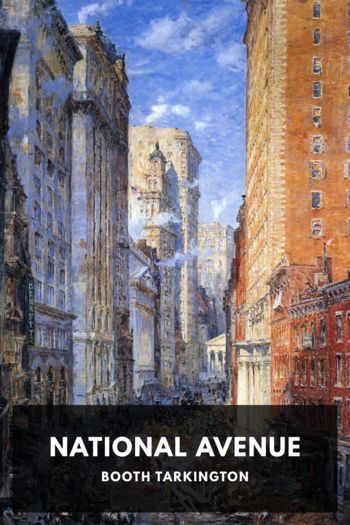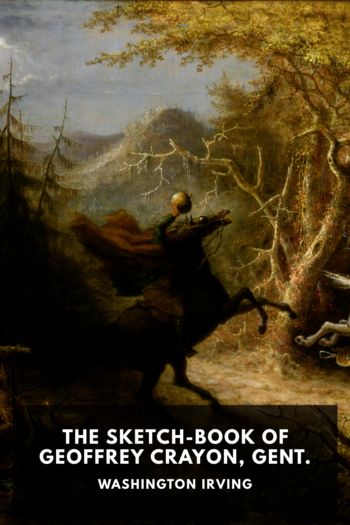Enchanted Evenings:The Broadway Musical from 'Show Boat' to Sondheim and Lloyd Webber by Block, Geoffrey (good story books to read .TXT) 📕

Read free book «Enchanted Evenings:The Broadway Musical from 'Show Boat' to Sondheim and Lloyd Webber by Block, Geoffrey (good story books to read .TXT) 📕» - read online or download for free at americanlibrarybooks.com
Read book online «Enchanted Evenings:The Broadway Musical from 'Show Boat' to Sondheim and Lloyd Webber by Block, Geoffrey (good story books to read .TXT) 📕». Author - Block, Geoffrey
Michael Veseth, the “ideal reader” of the first edition, was always available to demonstrate his problem-solving acumen and to help me figure out what I was trying to accomplish. Andrew Buchman offered thorough, knowledgeable, and helpful comments on the expanded Sondheim chapter and the three new chapters and provided an invaluable sounding board and an endless source of enthusiasm and encouragement at every stage.
As with the first edition, my wife, Jacqueline, and daughters, Jessamyn and Eliza, provided a family ambiance of love and encouragement, blessings that were deeply appreciated and especially meaningful at a time of loss and mourning. My mother died in August 2007, not long after Norm first proposed my doing an expanded second edition of Enchanted Evenings, and my dad died while I was writing the new chapters last October. I dedicate this second edition to their inspiring example and beloved memory.
USING THE ENCHANTED EVENINGS WEBSITE
Oxford has created a companion website, www.oup.com/us/enchantedevenings, to accompany Enchanted Evenings: The Broadway Musical from Show Boat to Sondheim and Lloyd Webber, and the reader is encouraged to take full advantage of it. Among its contents, the website offers plot synopses, a discography and filmography, appendices of Sources, Published Librettos, and Vocal Scores, Long Runs: Decade by Decade 1920s–2000s, The Forty Longest-Running Musicals on Broadway 1920–1959 and 1920–2008, and additional useful and extensive appendices listing scenes and songs for the opening night Broadway versions of all of the principal shows discussed in the main text. In addition, the website offers outlines of scenes and songs from pre-Broadway tryouts, Broadway revivals, and other source material to assist the reader’s understanding and comprehension of the discussions. The phrase “online website” will appear at the mention of these appendices in the main text.
OVERTURE
CHAPTER ONE
INTRODUCTION
Setting the Stage
The central subjects in acts I and II of this book are fourteen “book” musicals that premiered on Broadway between the late 1920s and the late 1950s, beginning with Show Boat (1927) and ending with West Side Story (1957).1 All of these shows, and the Sondheim and Lloyd Webber shows discussed in the Epilogue—most for several generations—have demonstrated a measure of popularity and critical approbation. They also offer an array of fascinating critical, analytical, social, and historical issues. Perhaps more important, the musicals surveyed here continue to move us to applaud and cheer (and sometimes hiss), to sing their songs, follow their stories, and make us laugh and cry. In short, they entertain us. Forty, fifty, sixty, even eighty years later we eagerly revisit these shows, not only on Broadway, but in high school and college productions and amateur and professional regional theaters of all shapes and sizes, artistic aims, audiences, and budgets.
In this selective (and to some degree idiosyncratic) survey I do not presume to develop a theory of permanent or ephemeral values or to unravel the mysteries of either artistic merit or popular success. I do, however, attempt to establish a critical and analytical framework that might contribute to an understanding, appreciation, and enjoyment of the selected musicals. The purpose of this introduction is to present recurring topics and issues, to encapsulate the approach to the subject this book will take, and to explain—and sometimes defend—the choices.
Why start with Show Boat? Certainly, other American musicals that premiered before December 27, 1927, are still successfully revived. Nevertheless, although the choice of where to begin a survey of Broadway is by nature somewhat arbitrary and destined to generate controversy, Broadway historians and critics with surprising unanimity subscribe to the view espoused by the admittedly biased judgment of Show Boat enthusiast Miles Kreuger: “The history of the American Musical Theatre, quite simply, is divided into two eras—everything before Show Boat and everything after Show Boat.”2Show Boat not only opened up a world of possibilities for what an ambitious American musical on an American theme could accomplish; it remains firmly anchored as the first made-in-America musical to achieve a secure place in the core repertory of Broadway musicals.
Before Show Boat the Broadway shows that created their greatest initial and most lasting imprints were often British and Viennese imports such as William S. Gilbert and Arthur Sullivan’s H.M.S. Pinafore (1879) and Franz Lehár’s The Merry Widow (1907), respectively. Earlier shows that displayed unequivocally American themes—for example, the so-called Mulligan shows of Edward Harrigan and Tony Hart between 1879 and 1883, Percy Gaunt and Charles H. Hoyt’s phenomenally successful A Trip to Chinatown in 1891 (657 performances), and George M. Cohan’s Little Johnny Jones in 1904—are today remembered for their songs.3 The latter show is perhaps best known from its partly staged reincarnation in film (the 1942 classic film biography of Cohan, Yankee Doodle Dandy, starring James Cagney) or the musical biography George M! (1968), which features a potpourri of memorable Cohan songs. Victor Herbert’s Naughty Marietta (1910), Jerome Kern’s so-called Princess Theatre Shows (1915–1918) with books and lyrics by P. G. Wodehouse and Guy Bolton (especially Very Good Eddie and Leave It to Jane), Harry Tierney and Joseph McCarthy’s Irene (1919), Sigmund Romberg’s The Student Prince in Heidelberg (1924), Vincent Youmans’s and Irving Caesar’s No, No, Nanette (1925), and The Desert Song (1926) (music by Romberg, lyrics by Otto Harbach and Oscar Hammerstein 2nd) are occasionally revived and singled out as outstanding exponents of the American musical before Show Boat.4 But unlike Gilbert and Sullivan and Lehár’s imported classics, these stageworthy as well as melodious operettas and musical comedies are not widely known, and the Herbert and Romberg operettas are mainly familiar to the Broadway-attending public primarily in greatly altered MGM film versions.5 The unfairly neglected musicals before Show Boat certainly merit a book of their





Comments (0)